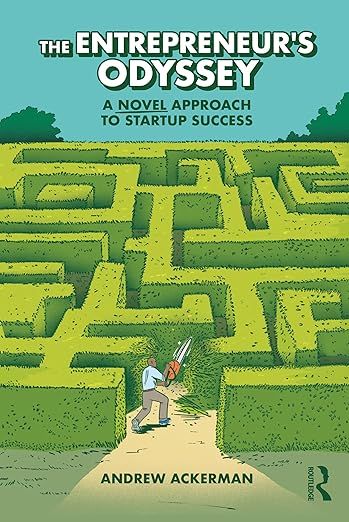How to Hack Big-Agency PR With AI: A Complete, Ethical Playbook to Win Press Without the $25k–$50k Price Tag

Table of Contents
Executive Summary
The PR Firm Value Stack You’re Replicating With AI
Foundations: Brand Narrative, Proof, and Positioning
Your AI-Powered PR Content Engine
Building a Targeted Media List With AI
Angle Creation: What’s Newsworthy and Why Anyone Should Care
Crafting Pitches That Get Opened and Answered
Authentic Outreach on Email and Social Without Annoying Reporters
Multi-Touch PR Workflow and Cadence
Press Kit, Media Room, and Assets
Measurement, Attribution, and Iteration
Legal, Compliance, and Ethical Guardrails
A 30-Day Sprint Plan
Advanced Plays: Data, Research, and Thought Leadership at Scale
FAQs
1) Executive Summary
You can replicate the core services of a world-class PR firm by combining disciplined strategy with AI to create newsroom-ready content, build precise media lists, personalize outreach, and measure results. The key is to act like an editor’s best source: be accurate, fast, respectful, and useful. This guide gives you the exact workflows, prompts, templates, and etiquette to land real coverage while maintaining relationships.
2) The PR Firm Value Stack You’re Replicating With AI
Most premium PR retainers bundle these jobs to be done:
Messaging and positioning
Editorial calendar and angle development
Content creation: press releases, op-eds, data briefs, bylines, case studies
Media list building and relationship mapping
Journalist outreach across email and social
Rapid response to news cycles
Measurement and reporting
AI helps you accomplish each step faster, cheaper, and with better personalization. The only thing it can’t replace is your integrity, responsiveness, and the respect you show to journalists.
3) Foundations: Brand Narrative, Proof, and Positioning
Before you pitch, fix your core story and proof.
Deliverables
One-sentence positioning: who you help, what outcome, how you’re different
100-word and 300-word bios for your founder and brand
Three proof pillars: data points, case studies, notable partners or users
Hot topics you can speak on today
Clear media goals: exposure, credibility, or lead flow
AI Prompt to Draft Your Narrative
“You are a veteran tech editor. Write a positioning statement, a 100-word founder bio, and a 300-word company bio for a Florida-based AI marketing consultancy serving SMBs and regulated industries. Include three proof pillars using credible but generalizable examples, avoid hype, keep reading level grade 8–10.”
Refine until it feels like something a reporter could paste into a sidebar.
4) Your AI-Powered PR Content Engine
You need publishable assets that de-risk coverage for editors.
Core Assets
Press release templates for product, partnership, funding, hiring, and research
One byline per month on a timely topic
One data brief or industry pulse per quarter
Two case studies with measurable outcomes
Quote bank: 20 expert quotes on 5 recurring topics
Media FAQ and boilerplate
Press Release Structure
Headline with clear news event and impact
Subhead with proof or stat
Dateline and first paragraph with who, what, when, where, why
Two stakeholder quotes
Context paragraph: market size, trend, or regulation relevance
Call to action for media
Boilerplate
AI Prompt for Press Release Draft
“Act as a business wire copy editor. Draft a 450-word press release about [event]. Use AP style, short sentences, no fluff, include two quotes, and provide a 75-word boilerplate. Add a realistic statistic from a credible third-party source and cite it generally.”
Byline/Op-Ed Prompt
“You are a columnist at a national business publication. Write an 850-word byline that argues [thesis]. Provide three counterpoints and rebuttals, two case examples, and a closing section of practical steps. Keep it non-promotional.”
Quote Bank Prompt
“Produce 20 media-ready quotes for a founder on these five topics: [list]. Each quote 25–35 words, crisp, contrarian where possible, and fact-aware.”
5) Building a Targeted Media List With AI
This is where most time is usually spent. You’ll do it precisely and ethically.
What You Need in Your Sheet
Outlet, section or podcast show
Journalist name, role
Recent relevant articles with links and dates
Email (verified), Twitter/X, LinkedIn, Mastodon, Threads, Instagram (if applicable)
Beat tags and angle preferences (what they like to cover)
Personalization notes (do not pitch X topics; likes data or case studies; prefers morning emails)
Status and next action
How to Source
Use AI to summarize recent articles for each journalist and extract beats, keywords, and tone.
Use reputable contact discovery tools to find emails, then verify with an email verifier.
Supplement with social handles from public profiles.
Log everything in your spreadsheet or CRM.
AI Prompt to Build Journalist Profiles
“Read the last 10 articles by [journalist] from [outlet]. Summarize their beat in 3 bullets, list recurring keywords, flag pet peeves, and propose two tailored pitch angles they might take interest in this month. Keep under 150 words.”
Verification and Respect
Only contact journalists whose recent work clearly matches your angle.
Always verify emails. Hard bounces hurt your domain and your reputation.
If someone says no, mark it and do not email again for that angle.
6) Angle Creation: What’s Newsworthy and Why Anyone Should Care
Editors care about what informs, surprises, or equips their audience. Make your pitches anchored to one of these angle types:
Calendar-driven: tie to earnings, industry conferences, seasonal cycles, new regulations
Data-driven: publish original stats from a survey, product usage, or public datasets
People-driven: notable hire, board member, or profile with a lesson
Market-driven: comparisons, category shifts, pricing or adoption curves
Service-driven: new product capability with clear user impact
Response-driven: expert commentary within hours of breaking news
AI Prompt to Generate Angles
“Given this company summary and these three audience personas, generate 12 press angles across calendar, data, people, market, service, and response. For each angle, include a hook, one stat to source, a proposed headline, and a 50-word summary.”
7) Crafting Pitches That Get Opened and Answered
The Subject Line
6–9 words, concrete noun plus outcome
Reference the journalist’s recent coverage only if relevant
Avoid bait. Promise less, deliver more
Examples:
“Exclusive: Florida SMBs cut ad waste 28% with AI workflows”
“New dataset: 1.2M local reviews, what changed after AI overviews”
Pitch Body Framework (120–180 words)
One-line context tied to their beat
The news or idea in one sentence
The proof: data point, sample customers, or artifact
What you can provide: interview, charts, early access, unique angle
Availability and a link to assets
Gracious close
Short Pitch Template
Hi [First Name],
I loved your piece on [specific article and why it matters to their audience]. Would a quick, exclusive look at [your angle] be useful for your readers this week?
In short: [one-sentence news or insight]. Backed by [proof or dataset]. We can share [chart, case study, founder interview] and embargo until [date] if helpful.
Assets and 2-paragraph brief here: [link].
If not a fit, no problem. Either way, thank you for the reporting you do.
Best,
[Name] | [Role] | [Phone]
[Link to press kit]
Follow-up Reply Template
Hi [First Name],
Circling back once, in case this was buried. If timing is off, I can hold updates until your next piece on [beat].
Either way, appreciate your work.
8) Authentic Outreach on Email and Social Without Annoying Reporters
Golden Rules
Personalize with relevance, not flattery
Offer value in the first sentence
One short follow-up, then stop
Never argue if they pass
Be available, fast, and clear
Social Channel Tips
Twitter/X: Many reporters still prefer DMs for quick context. Keep the message under 240 characters.
LinkedIn: Send a short connection request that references a specific article and a one-line offer to help on that topic in the future. Wait before sending a full pitch.
Email remains primary for formal pitches and assets.
AI for Etiquette
Have AI audit your message tone:
“Rewrite this pitch to be concise, respectful, and non-promotional for a time-pressed business journalist. Limit to 140 words and remove adjectives that sound like marketing.”
9) Multi-Touch PR Workflow and Cadence
Cadence per Angle
Day 0: Initial email pitch to 5–12 highly targeted journalists
Day 2–3: One short follow-up to non-responders
Day 7: If still no response, broaden slightly or hold the angle
Day 14: Retire or reframe the angle unless it is evergreen
Daily Flow (45–60 minutes)
Scan news and schedule posts for reactive commentary
Draft or refine one asset (press note, quote, or chart)
Personalize and send 3–5 pitches
Update CRM and task the next steps
Thank any journalist who engaged, even if it was a pass
10) Press Kit, Media Room, and Assets
Reporters will not chase assets. Make it effortless.
What to Include
1-page media briefing PDF with fast facts
Founder bios and headshots
Product screenshots and a short demo video
Logos in multiple formats
Boilerplate
Recent press releases and coverage links
Contact info and after-hours number
AI Prompts for Asset Creation
“Create a 120-second script for a no-music product demo video. Focus on benefits, three use cases, and one statistic. End with how to contact media.”
“Summarize this 1,200-word press release into a 2-paragraph media brief and a bullet list of interview topics.”
11) Measurement, Attribution, and Iteration
Track
Outreach volume, open rates, reply rates, interviews booked
Coverage by outlet tier and topic
Referral traffic, leads, and assisted conversions
Share of voice on priority keywords and topics
Instrument
Use UTM parameters on links you provide to reporters
Maintain a log of which angles convert to coverage
Archive every successful pitch to reuse as a template
Iterate
Double down on journalists who reply, even when they pass
Capture their feedback in your sheet
Kill underperforming angles quickly
12) Legal, Compliance, and Ethical Guardrails
Do not manufacture facts or stats. If you use AI to summarize research, always link to the source and read it yourself.
Respect embargoes and exclusives.
Avoid sending attachments on first contact. Use links to a media room.
If you collect or analyze user data, anonymize and aggregate it.
Make opt-out easy and honor it permanently.
13) A 30-Day Sprint Plan
Week 1: Strategy and Setup
Finalize positioning, bios, proof pillars
Draft 1 press release and 1 byline outline
Build press kit and media room page
Create a target list of 30 journalists and 20 podcasts
Warm up sending domain and authenticate SPF/DKIM/DMARC
Week 2: Asset Production
Finalize press release, quotes, and media brief
Draft byline, secure one editor or submit to an outlet with clear guidelines
Produce a 120-second demo video and 4 press-ready images
Prepare a data brief or mini survey field plan
Week 3: Outreach
Pitch the first angle to 8–10 top-fit journalists
Offer one exclusive if appropriate
Book at least 2 interviews or 1 contributed piece
Send concise DM to 3 reporters you have not emailed
Week 4: Amplify and Measure
Publish byline or case study
Pitch the second angle or a reactive commentary
Compile coverage report, traffic, and inquiry metrics
Retrospective: cut what didn’t work, repeat what did
14) Advanced Plays: Data, Research, and Thought Leadership at Scale
Original Data
Create a short survey for your audience. 10 questions max.
Combine with publicly available datasets and your internal anonymized metrics.
AI can clean, categorize, and visualize the results.
Package into a 1-page data brief with three charts and one quote.
Rapid Response
Build a standing quote bank for predictable news cycles in your industry.
Use AI to generate 3 tailored paragraphs within 30 minutes of breaking news, then pitch only to journalists who have covered that specific angle in the past month.
Podcast and Niche Media
Pitch topic-first to show producers: “We can break down [trend] with two concrete examples and a simple framework your listeners can apply.”
Offer clean audio and a short prep sheet to make booking easy.
Local to National Ladder
Start with local business journals and industry newsletters.
Use that coverage in your pitch to national outlets as proof and context.
Keep the voice consistent and factual.
15) FAQs
Q1: How do I find the right journalist without spamming 100 people?
Start with 10. Use AI to read each journalist’s last 8–10 pieces and summarize their beat. Pitch only where there is a clean match. Track and respect preferences.
Q2: What should my email look like to avoid promotions folders?
Authenticate your domain, keep link count low, use plain text, avoid images in the first email, and never paste long press releases. Use a short, honest subject and body.
Q3: How many follow-ups are acceptable?
One short follow-up after 2–3 days is fine. Then stop unless you have new information or the journalist invited updates.
Q4: How can AI help me verify contact info?
Use reputable contact discovery and verification tools. Then have AI cross-check public profiles and recent bylines. Never guess. Remove any contact that bounces.
Q5: What makes a pitch instantly delete-worthy?
Irrelevant topic, long copy, hype without proof, attachments, and tone-deaf references. Keep it short, factual, and audience-first.
Q6: Should I offer an exclusive?
Only if the story is truly valuable and you know the best outlet for it. Say you can offer an exclusive for 24–48 hours. If they pass, move on.
Q7: How do I use AI without sounding robotic?
Draft with AI, then humanize. Remove filler adjectives, add concrete nouns, and use simple sentences. Read it out loud. If it sounds like a billboard, rewrite.
Q8: How do I measure whether PR is working?
Track interviews booked, coverage quality, referral traffic, assisted conversions, and the number of inbound journalist inquiries. Review monthly. Kill what doesn’t move those numbers.
Q9: Can I pitch on social first?
Yes, if the journalist is active there. Make it one line and value-first. Then follow with an email that includes assets. Never paste a full pitch in a DM.
Q10: What’s the single most important thing to remember?
Be useful. If you consistently help journalists inform their audience with speed and clarity, you will earn coverage and long-term relationships.
Copy-and-Paste Resources
One-Page Media Brief Template
What’s new: 2 lines
Why it matters: 2 lines
One stat: 1 line, source
Interview availability: Name, role, area of expertise
Assets: Link to press kit, product demo, 3 screenshots
Contact: Direct phone and email
Journalist Profile Notes Template
Beat summary: 3 bullets
Recent articles and dates: 3–5 links
Preferences: likes data, dislikes founder puff pieces, prefers morning emails
Pitch fit today: Yes or No
Two angle ideas tailored to them
Status and next action
Angle Scorecard
Timeliness: 1–5
Relevance to beat: 1–5
Proof strength: 1–5
Audience utility: 1–5
Effort to produce assets: 1–5
Prioritize angles with total score 16 or higher.
Putting It All Together
You do not need a massive retainer to act like a world-class PR team. You do need discipline, clear positioning, newsroom-ready assets, precise lists, authentic outreach, and the professionalism to be a source editors can trust. AI reduces the grunt work and multiplies your personalization. Your respect for journalists and your usefulness to their readers are what close the gap.
If you want help implementing this exact workflow for your business, NinjaAI.com can stand up the full stack: positioning, content engine, media list building, respectful outreach, and measurement. We can also train your team to run it in-house.
You now have the playbook. Use it well, iterate often, and focus on being genuinely helpful. That is how you win press you can be proud of, at a fraction of the traditional cost.















